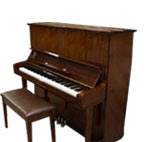17-year-old Marian Bechtel might live in Pennsylvania, where land mines are not a common occurrence, but she has still managed to invent the prototype for a brand-new minesweeper.

Marian Bechtel was a finalist in the 2012 Intel Science Talent Search.
The device, which cost far lower than current technology, uses sound waves to figure out where the deadly devices are. The combination of sensitive microphones and a seismic vibrator connected to a standard metal detector was tested, successfully, on mock plastic and metal land mines. It was a finalist in the recently concluded 2012 Intel Science Talent Search.
The project was inspired by family connections and a lucky flash of inspiration, Bechtel tells Co.Exist:
“My parents are both geologists,” she says. “Years ago they got connected with an international group of scientists working on a project called RASCAN, developing a holographic radar device for detecting land mines. During the summer before eighth grade, I met all of these scientists and talked with them about their work and the land mine issue. I was really touched and inspired by what they had to say, and wanted to get involved in science and possibly land mine detection.”
Where does a 17-year-old find inspiration for life-saving innovation? In her music practice:
“I noticed that when I played certain chords or notes on the piano, the strings on a nearby banjo would resonate,” says Bechtel. “I heard this, and it was almost like the story of the apple falling on Newton’s head — I thought that maybe I could use the same principle to find landmines. So, I began doing research and talking with scientists in humanitarian de-mining and acoustics; three years later I had built a prototype.”
Sean Sennott of the FDW Corp. and Lorenzo Capineri of the University of Florence also provided assistance. In addition, Bechtel was the recipient of a fellowship from the Davidson Institute for Talent Development […]
The winners of the Intel Science Talent Search, who were named on March 13, also include Nithin Tumma of Michigan, who won $100,000 for his research into breast cancer treatments, and Andrey Sushko of Washington state, who won $75,000 for developing a tiny motor for use in microrobotics. Other winners included projects on microscopic worms, Cherednik algebras, and the use of non-speech patterns of sound to convey information.










